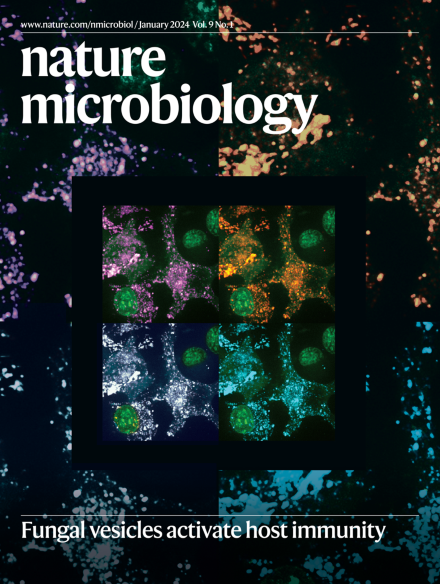代谢模型揭示了小鼠宿主-微生物组代谢相互作用的衰老相关下降
IF 20.5
1区 生物学
Q1 MICROBIOLOGY
引用次数: 0
摘要
衰老伴随着肠道微生物组的巨大变化,但驱动衰老的分子机制和微生物组的作用仍不清楚。在这里,我们将衰老小鼠的元基因组学、转录组学和代谢组学与代谢模型相结合,描述了衰老过程中宿主与微生物组之间的相互作用。通过重建宿主和 181 种小鼠肠道微生物的综合代谢模型,我们显示了宿主代谢对已知和以前未描述过的微生物相互作用的复杂依赖性。我们观察到,衰老微生物群中的代谢活动明显减少,同时细菌物种之间的有益相互作用也减少了。这些变化与全身性炎症的增加和宿主重要通路的下调不谋而合,尤其是核苷酸代谢,据预测,核苷酸代谢依赖于微生物群,对维护肠道屏障功能、细胞复制和平衡至关重要。我们的研究结果阐明了可能影响宿主衰老过程的微生物组-宿主相互作用。这些途径可作为未来开发基于微生物的抗衰老疗法的目标。本文章由计算机程序翻译,如有差异,请以英文原文为准。


Metabolic modelling reveals the aging-associated decline of host–microbiome metabolic interactions in mice
Aging is accompanied by considerable changes in the gut microbiome, yet the molecular mechanisms driving aging and the role of the microbiome remain unclear. Here we combined metagenomics, transcriptomics and metabolomics from aging mice with metabolic modelling to characterize host–microbiome interactions during aging. Reconstructing integrated metabolic models of host and 181 mouse gut microorganisms, we show a complex dependency of host metabolism on known and previously undescribed microbial interactions. We observed a pronounced reduction in metabolic activity within the aging microbiome accompanied by reduced beneficial interactions between bacterial species. These changes coincided with increased systemic inflammation and the downregulation of essential host pathways, particularly in nucleotide metabolism, predicted to rely on the microbiota and critical for preserving intestinal barrier function, cellular replication and homeostasis. Our results elucidate microbiome–host interactions that potentially influence host aging processes. These pathways could serve as future targets for the development of microbiome-based anti-aging therapies. A multi-omics approach reveals host–microbiome interactions in aging in mice.
求助全文
通过发布文献求助,成功后即可免费获取论文全文。
去求助
来源期刊

Nature Microbiology
Immunology and Microbiology-Microbiology
CiteScore
44.40
自引率
1.10%
发文量
226
期刊介绍:
Nature Microbiology aims to cover a comprehensive range of topics related to microorganisms. This includes:
Evolution: The journal is interested in exploring the evolutionary aspects of microorganisms. This may include research on their genetic diversity, adaptation, and speciation over time.
Physiology and cell biology: Nature Microbiology seeks to understand the functions and characteristics of microorganisms at the cellular and physiological levels. This may involve studying their metabolism, growth patterns, and cellular processes.
Interactions: The journal focuses on the interactions microorganisms have with each other, as well as their interactions with hosts or the environment. This encompasses investigations into microbial communities, symbiotic relationships, and microbial responses to different environments.
Societal significance: Nature Microbiology recognizes the societal impact of microorganisms and welcomes studies that explore their practical applications. This may include research on microbial diseases, biotechnology, or environmental remediation.
In summary, Nature Microbiology is interested in research related to the evolution, physiology and cell biology of microorganisms, their interactions, and their societal relevance.
 求助内容:
求助内容: 应助结果提醒方式:
应助结果提醒方式:


